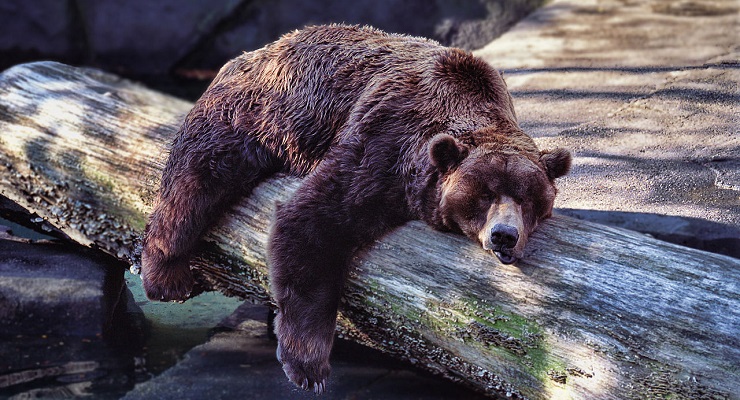
Ye shall hallow the 50th year, and proclaim liberty throughout all the land unto all the inhabitants thereof: it shall be a jubilee unto you; and ye shall return every man unto his possession, and ye shall return every man unto his family. Leviticus 25:10
I’m not grown-up enough to be 50.
So perhaps it’s fitting that I celebrated passing the half-century mark by coaching some Southern California children in their Little League opener. My party consisted of post-game cupcakes and fourth-grade humor.
Or maybe I missed an opportunity to take a day off. Under the Biblical tradition of jubilee, every 50 years you are supposed to release people from debts, free all slaves, return property to its owners, and go home. Instead of working the fields, you should rest—and take that time to reassess.
Rest and reassessment sound pretty good right now, after the exhausting pandemic years, and not just for your columnist, who has been banging out these weekly pieces for 10 years.
California could use its own jubilee year, to reflect and rethink how it governs itself.
I, like the state’s 21st-century governing system, am a child of the 1970s. I was born in 1973, which makes me a rare bird. Fewer children were born in the United States in that year than any since 1945. In retrospect, it looks like a nadir of post-war America, with gas lines, the Vietnam War, the Watergate scandal.
But it was also a time of new beginning.
The resulting popular anger of that decade produced many changes in the country and in California. The 1970s birthed our signature environmental laws, the reform initiative that still rules our politics, and Proposition 13, the tax initiative that is the foundation of our highly complicated system of governance. That decade also inspired the political career of Jerry Brown, who has been governor for one-third of my half-century life. He, as much as anyone, turned California’s governorship into a second American presidency, with power over a large and highly centralized system.
Looking back now, it is remarkable how much California has achieved despite the governmental dysfunction birthed in the 1970s. We are a far richer and wealthier place than we were a half-century ago. Our air and water are far less polluted. We are better educated. We live longer. We have extended legal protections and rights to Californians of all kinds, even as other parts of the country attack bodily autonomy and limit voting.
California could use its own jubilee year, to reflect and rethink how it governs itself.
Our problems, while serious, are in most respects the results of our successes. We produced so much wealth that our inequality is great. We created so much new technology that we disrupted our lives. We produced so many jobs that our traffic got worse, and all those drivers wore down our infrastructure and spewed more greenhouse gases. We grew so much cheap and abundant food that we have an obesity crisis. The University of California got so good that it became nearly impossible to be admitted to a campus. Our housing prices soared, leaving more people homeless.
But how long can all that success, and all the negative consequences of that success, go on?
The number of children is declining, as is immigration to California. Every single year of this century, the state has lost more people to other states than it has gained. The exodus to other states is accelerating. So, California’s overall population is shrinking, staying under 40 million; estimates from 50 years ago had us reaching 100 million by now.
That population is not likely to rebound soon, because so few people move here. The Public Policy Institute of California recently reported that “the state is no longer a significant draw for people from other states of any age, education, or income.” Does anyone know the words to “California, Here I Come?” anymore?
A sane state might stop, take a breath and a year off, and think about how to make California attractive again. But we’ve never been sane. Instead, we are hurtling ahead, spinning new and expensive solutions to our success, depending on Silicon Valley dollars that may not last forever.
State lawmakers, as usual, are offering thousands of new proposals, all building on the existing system. Gov. Gavin Newsom, touring California this month in lieu of the traditional State of the State address, pushed out familiar-sounding ideas for old problems at a rapid clip. But neither he nor anyone else in power seems capable of slowing down long enough to design new systems that fit our age.
In recent years, I’ve spent more time outside the country, looking at how provinces and states govern themselves, and realize that there are many better directions for California to go. Thinking about the possibilities makes me feel young, even though I’m the same age as the former starlet Kate Beckinsale, the previously ahead-of-his-time comedian Dave Chappelle, and the one-time political wunderkind turned U.S. Senator Alex Padilla. It’s hearing people talk about all the old limits, about all the reasons we can’t change things, that makes me feel old.
These days, with strange weather making the climate crisis undeniable, we’re often told that time is running out. But even when you’re a half century old, you have a lot of time left. I’m a teetotaler, and my relatives who don’t drink often live well into their 90s—that’s nearly another 50 years. Who knows? Maybe the scientists who are radically extending the lives of lab rats can get me another 100.
I don’t know if it’s child-like or immature or irresponsible to dream of new beginnings. But I do know that many of the pre-teen ballplayers whom I coach on Saturdays will see 22nd-century California. What better time than right now for a statewide jubilee, where we retreat and imagine a new path to their not-so-distant future?
Leave a Reply